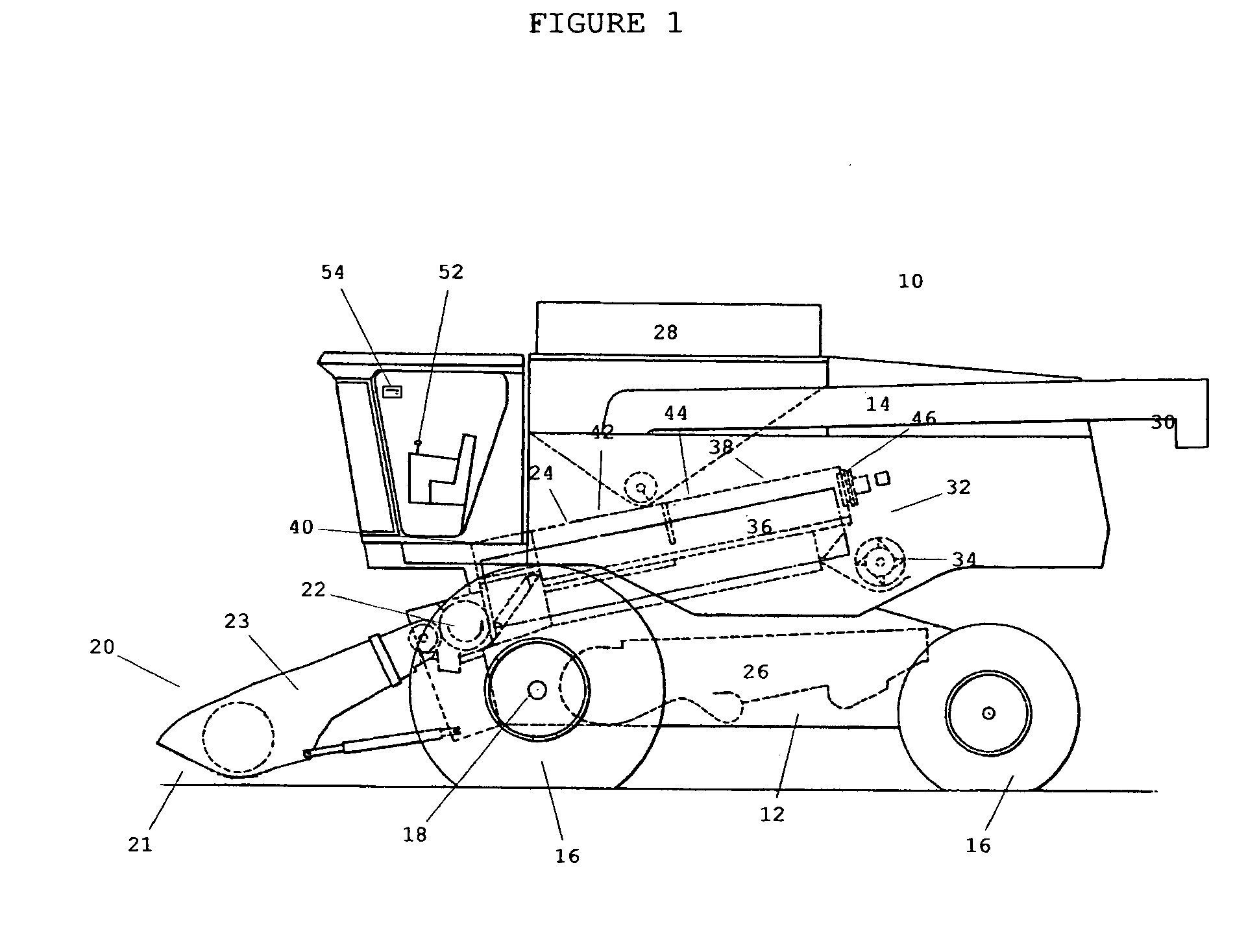Engine load control for hydrostaticaly driven equipment
a technology of hydrostatic or hydraulic drive and load control, which is applied in the direction of picking devices, agricultural tools and machines, picking devices, etc., can solve the problems of crop damage, crop damage, crop damage, and inefficient use of the machine, so as to reduce crop damage, increase harvest area, and reduce crop loss
- Summary
- Abstract
- Description
- Claims
- Application Information
AI Technical Summary
Benefits of technology
Problems solved by technology
Method used
Image
Examples
Embodiment Construction
[0032]FIG. 1 is a left elevation view of a combine 10 type harvester.
[0033]FIG. 2 is a schematic perspective view of a harvester load effects.
[0034]FIG. 3 is a schematic perspective view of a load control operational flow.
[0035]FIG. 4 is a schematic perspective view of a load control and its components.
[0036]Referring to FIG. 1, therein is shown an agricultural harvester comprising a main frame 12 supported for movement by a wheel structure including drive wheels 16 driven by a hydrostatic transmission 18. The wheel structure depicted could include or be composed of ground engaging tracks or multiples of wheels 16 other than shown.
[0037]A vertically adjustable header or harvesting platform 20 with a cutter bar 21 is used for cutting a standing crop and directing cut material further processing. FIG. 1 depicts one type of harvester known as a combine 10 which includes crop processing features such as the feeder house 23 that is pivotally connected to the frame 12 and includes a conve...
PUM
 Login to View More
Login to View More Abstract
Description
Claims
Application Information
 Login to View More
Login to View More - R&D
- Intellectual Property
- Life Sciences
- Materials
- Tech Scout
- Unparalleled Data Quality
- Higher Quality Content
- 60% Fewer Hallucinations
Browse by: Latest US Patents, China's latest patents, Technical Efficacy Thesaurus, Application Domain, Technology Topic, Popular Technical Reports.
© 2025 PatSnap. All rights reserved.Legal|Privacy policy|Modern Slavery Act Transparency Statement|Sitemap|About US| Contact US: help@patsnap.com



